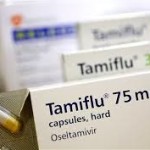 Vitamin A is most famous for its topical uses in skin care. It is the basis for the retinoid treatments which are used to prevent and treat acne as well as in the anti aging process. Vitamin A is a group of compounds that plays an important role in bone growth, reproduction, cell division and cell differentiation within the body. It helps to regulate the immune system which is the part of the body that helps to prevent or fight off infections. It also might help lymphocytes to fight infection more effectively.
Vitamin A is most famous for its topical uses in skin care. It is the basis for the retinoid treatments which are used to prevent and treat acne as well as in the anti aging process. Vitamin A is a group of compounds that plays an important role in bone growth, reproduction, cell division and cell differentiation within the body. It helps to regulate the immune system which is the part of the body that helps to prevent or fight off infections. It also might help lymphocytes to fight infection more effectively.
Doctors know that vitamin A also helps to promote healthy surface linings in the eye and respiratory as well as urinary and intestinal tracts. When these linings break down it becomes easier for bacteria to enter the body and cause infection.
Deficiencies are usually rare in developed countries and since it’s a fat-soluble vitamin, individuals can develop dangerous levels if taken in large doses over time. Using a supplement of vitamin A is especially risky for women who are pregnant because of the risks to the developing baby.
Researchers and dietary experts understand how essential vitamin A is for good health which is why many breakfast cereals and low-fat milk is fortified with it. However, taken in large doses over time it may actually weaken women’s bones and increase the risk of fractures as revealed by a Harvard study. In this study of 70,000 postmenopausal nurses, researchers found that the women who consume the most vitamin A from foods or supplements had nearly double the risk of fractures compared with those who consumed the least. A Swedish study in 1998 confirmed these findings although no other study has since found such a risk. (1)
The difference between the Swedish study and the Harvard study may have been that in those studies the women used “reformed” vitamin A, also called retinol. Because there have been no studies which found adverse effects from carotenoids from which the body converts to vitamin A, it is theorized that the problem was from the retinol and not naturally occurring vitamin A.
 Excellent food sources for vitamin A include fruits, carrots, green and yellow vegetables, dairy products, lamb and fish liver oils. Physicians have used it in external topical preparations to treat acne, eczema and psoriasis because it encourages a more rapid cell turnover of the outer layer of skin. Doctors also use it to help treat eye disorders, respiratory diseases and gastric ulcers as well as to help prevent the development of cancer.
Excellent food sources for vitamin A include fruits, carrots, green and yellow vegetables, dairy products, lamb and fish liver oils. Physicians have used it in external topical preparations to treat acne, eczema and psoriasis because it encourages a more rapid cell turnover of the outer layer of skin. Doctors also use it to help treat eye disorders, respiratory diseases and gastric ulcers as well as to help prevent the development of cancer.
People who have a deficiency of vitamin A may show burning aging eyes, a dry scaly skin or scalp as well as frequent headaches, weight loss, pain in the eyeballs and poor hair quality. Because vitamin A is a fat-soluble vitamin, which means that it is not excreted in but rather stored in the fat cells, individuals can also take too much and shows signs of toxicity. Some of the signs of having taken too much vitamin A include cracks in the corner of the mouth and lip, enlarged liver, fatigue, hemorrhages, mental irritability, loss of hair, loss of appetite, sleep disturbances, vomiting, water retention and weight loss.
It is highly unlikely that if an individual takes in a sufficient amount of fruits and vegetables that they will need a supplementation of vitamin A in order to prevent deficiency. It is important to read the bottle of any multivitamin that you may be taking in order to ensure that you are not taking too much of a specific vitamin which you know you are receiving in your daily food intake.
References:
(1) The Harvard Medical School Family Health Guide: Vitamin A and Hip Fracture Risk
http://www.health.harvard.edu/fhg/updates/update0303c.shtml


Leave a Reply